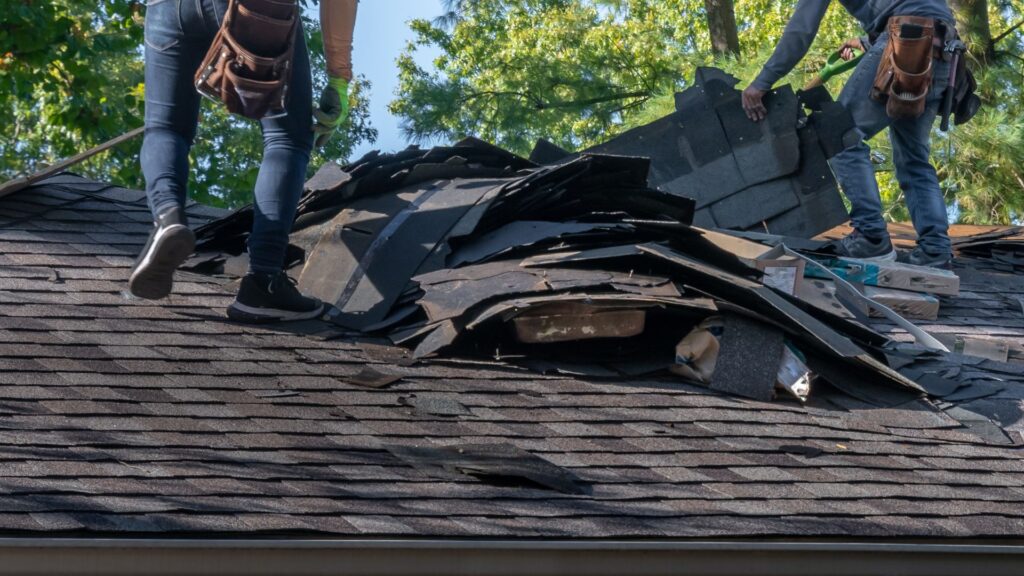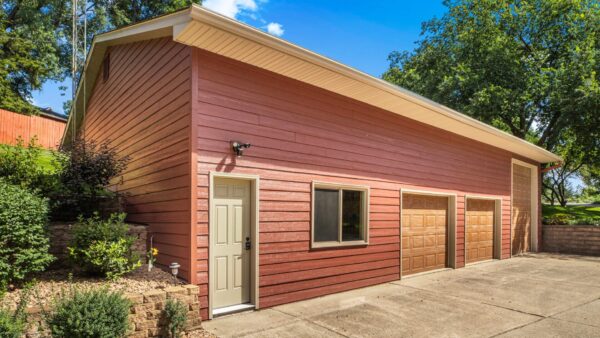
The St Cloud and Greater Central MN area can suffer some pretty harsh winter weather, so it’s important to take a good look at your roofing and ensure it didn’t get damaged with all the freezing temperatures, snow, and ice we experienced.
Your roof is a big investment, so keeping it in good shape is vital to its longevity. Preserve it by inspecting it every spring, fall, and after major storms—and deal with any damage you find promptly to get the most out of your current roof. Here’s how:
Evaluating and Addressing Winter Damage to Your Roof
Does your attic show signs of moisture intrusion?
Begin your roof inspection by making your way into your attic with a flashlight. Look for condensation, leaks, and moist attic insulation. These are all signs of roof damage from missing shingles and compromised seals. Ice dams can also cause these problems, as well as damage from freeze-thaw cycles.
Do you notice obvious signs of roof damage from outside your home?
Now that spring is here and the icicles, snow, and ice have melted, grab your binoculars, step across the street, and take a good look at your roof’s condition. Check all of your roofing components like the shingles, seals around your chimney, caulking, flashings, vents, and more.
Are your ceilings or walls showing signs of moisture intrusion?
Discoloration on your highest floor’s ceilings indicates you have a roof leak. Look for damp spots, obvious leaks, warping, and wet, sagging areas. Cracked or flaking paint is another sign you’ve got moisture infiltration due to a roof problem. You may also spot peeling or bubbling wallpaper, indicating a roof leak.
Do your windows and doors show signs of damage?
Are your windows hard to open? Do they get stuck shut often? A structural shift in your home due to excess roof weight could be the culprit.
Tips on Conducting a Thorough Inspection to Protect Your Roof and Prevent Structural Issues
1. Walk around your home exterior to inspect your roof.
If you inspect your roof each spring, fall, and after major storms, you’ll know when something looks different than the last time you inspected it. Pay attention to things like—are there asphalt granules in your yard or at the base of your downspout?
2. Do your shingles look “bald”?
While it’s normal for some granules to come off from time to time, there shouldn’t be an excess amount on the ground. When granules go missing, your roof shingles aren’t as strong as they used to be, putting your roof at risk. If you spot “bald” shingles on your roof, they have lost the granules that help protect your home from the elements.
3. Are there missing shingles on your roof?
When roof shingles get old or damaged, they can go missing. High winds, hail, and snow can all take their toll on your roof during the winter. If you’re missing shingles, your home is at risk of water intrusion. Get your roof inspected by a pro.
4. Do shingles look dented due to hail damage?
Hail divots are unsightly, and they may cause loss of granules or visible damage to your shingles. Hail can make your shingles look misaligned or marked. If you suspect hail damage, have your roof inspected by a reputable contractor.
5. Do you see dark patches of growth on your roof?
Pesky moss can grow under and between shingles, causing them to lift and curl, leading to water intrusion. Algae looks like dark, unsightly streaks, and while it’s not as damaging as moss, it detracts from your home’s curb appeal and needs to be dealt with. Contact a roofing contractor to remove any plant growth from your roof. Don’t risk your safety by trying to deal with it yourself.
6. Can you spot obvious roof damage?
Use your binoculars to check your roof’s components carefully for signs of damage from winter weather. Is your flashing loose, damaged, or unsecured? Does your facia look warped? Is the caulking cracked, missing, or peeling off?
7. Are your gutters damaged?
Do your gutters look like they are sagging? Are they leaking between joints? Have they been cleaned recently, or are they clogged with debris buildup? Are their downspouts intact and working properly?
Gutters keep water channeled away from your home. When water builds up in them, they tend to back up into your roofing components, causing moisture damage. So it’s vital to keep gutters in good working order (and clean!) to safeguard your roof from harm.
8. Did animals try to make your home theirs?
Animals seek shelter and warmth and may have tried to enter your attic, creating damage to your roofing components on their way in. Look for signs of animal damage on your roof like chewed roofing materials and visible access points. Next, check your attic for any obvious signs an animal made its way into your home. Look for droppings, chewed wiring, or a nest. There is a risk of house fire if rodents chew the insulation off wires, so the situation should be dealt with promptly if you suspect an animal in your attic.
Get a Durable, Beautiful Roof Replacement Installed by Our Experienced Team
Roof damage may require roof repair or replacement. If you suspect roof damage, contact a reputable roofing contractor (like us!) to inspect your roof and give you guidance on what your roof needs so you can make an informed decision.
Since 1983, Lutgen Companies has provided over 10,000 homeowners with low-maintenance home renovations that give them the long-lasting solution they are looking for. Most homeowners feel frustrated when their exterior is damaged. Our simple remodeling process gives you lasting solutions you’re sure to love.
As a GAF Master Elite Contractor, you can expect a perfectly installed roofing system with an unbeatable 50-year warranty. Learn more about how our roofing services can enhance your home’s protection, beauty, and value.




